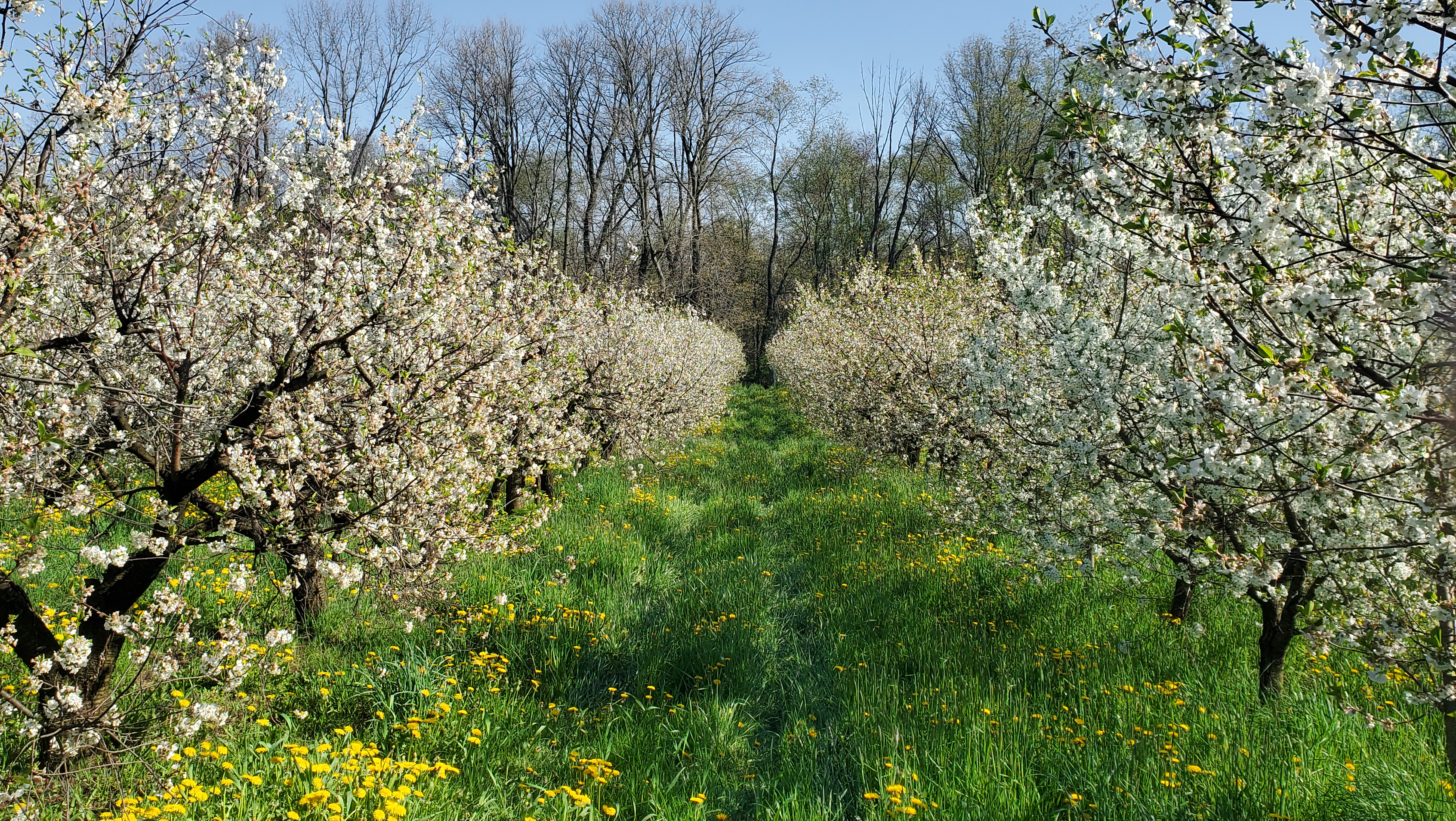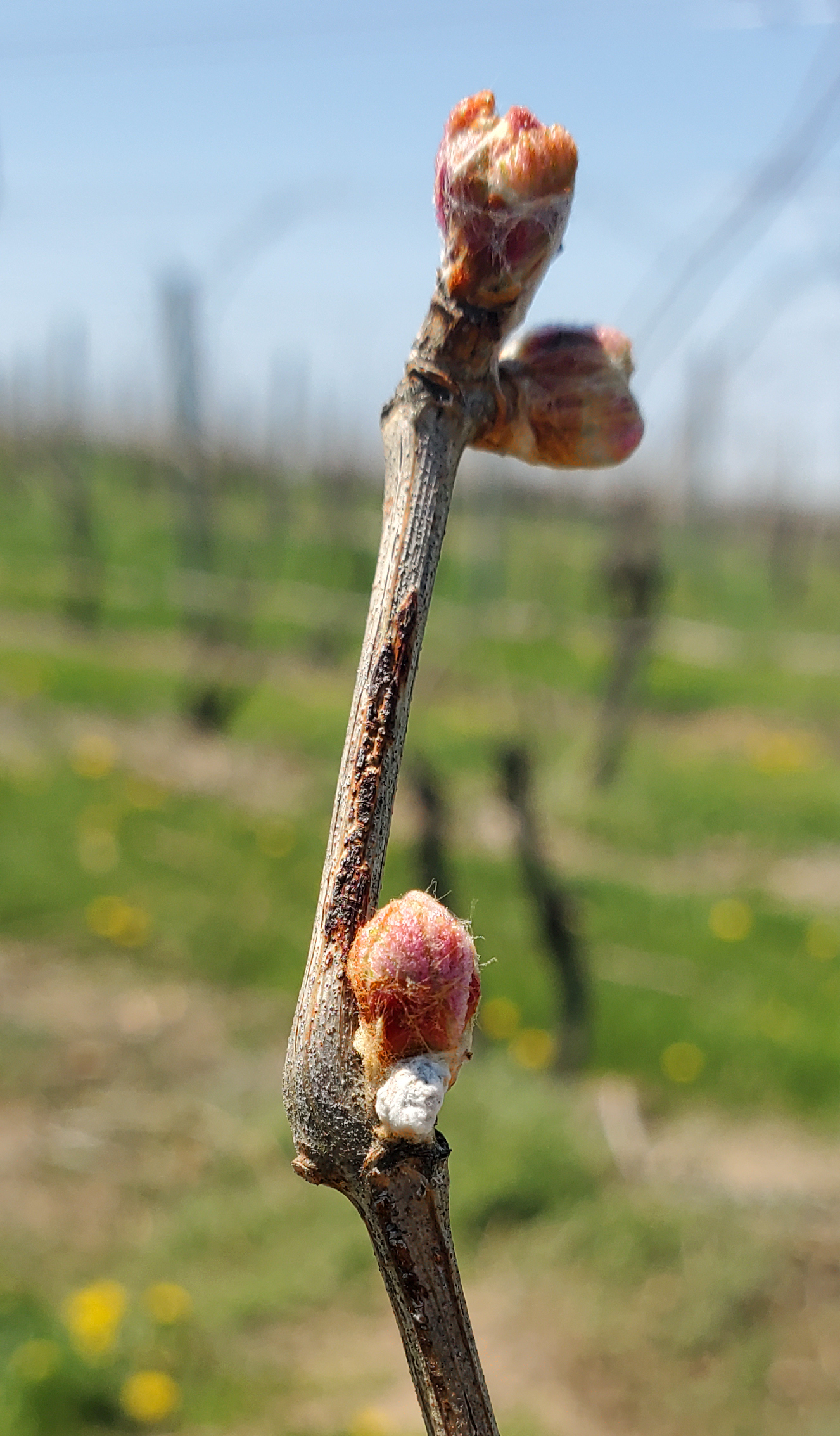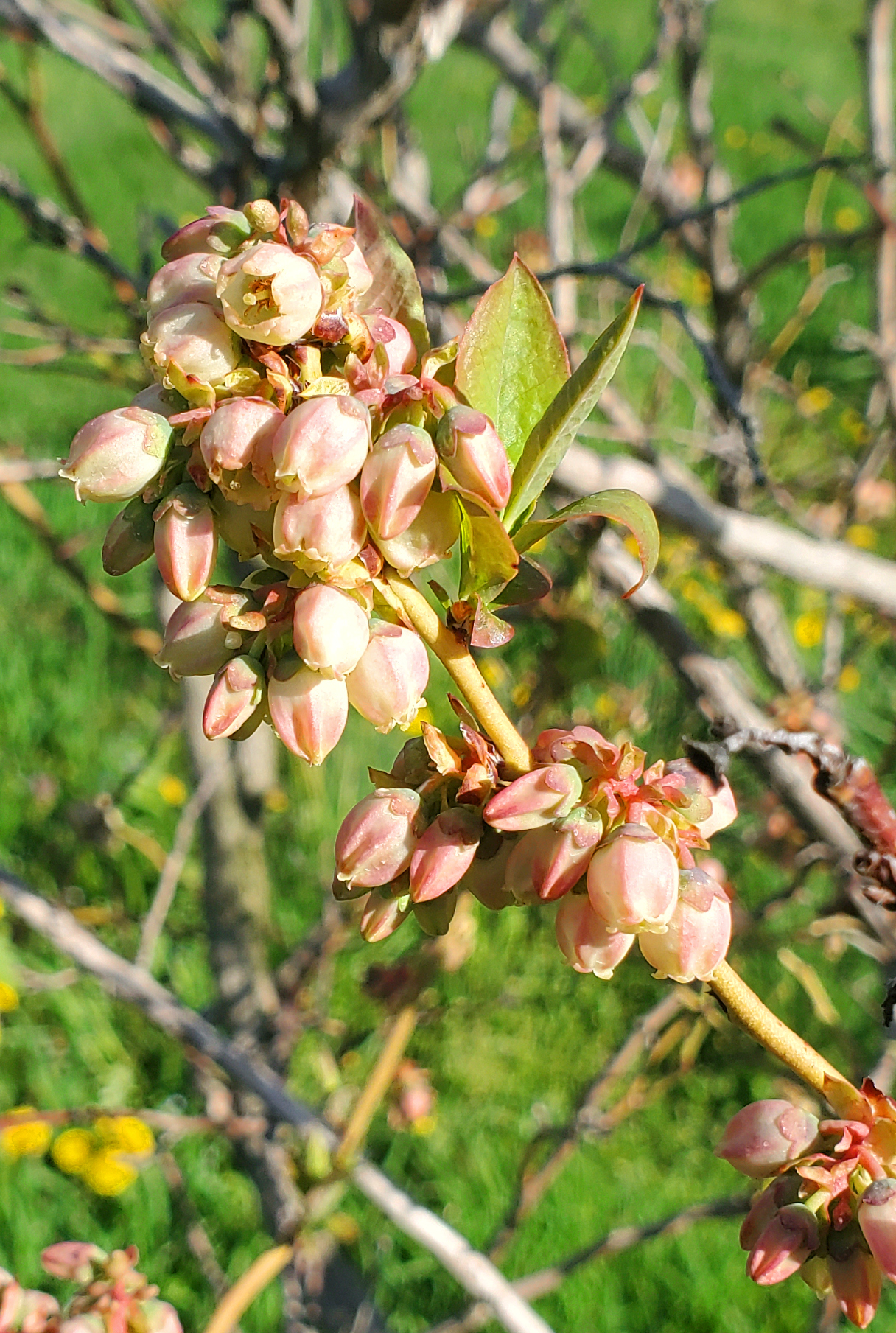Southwest Michigan fruit update – May 10, 2022
Hot weather this week will speed up crop development.

Weather
Last week was another cool week. High temperatures for much of the week were in the 50s with a mild warmup to the 60s over the weekend. Average high temperatures this time of year are in the mid-60s. Low temperatures were in the 40s. One major rain event on Tuesday brought 1-2 inches of precipitation. Scattered showers on Wednesday through Friday added another half to three quarters of an inch of rain for the week.
The coming week will be hot. Most days will see highs in the mid-80s, with lows in the 60s before dropping to more seasonal temperatures this weekend. A small chance for scattered showers exists on Wednesday and the coming weekend.
With the cool week, we picked up few degree days, 83 growing degree days (GDD) base 42, 36 GDD base 50. Half of them were collected in the last couple days. A month ago, we were near normal for degree day accumulation. We are now 2 weeks behind the long-term average. With the cool, wet spring, soils have been cool and wet as well, but will warm up this week.
|
Southwest Michigan GDD summary from March 1 - May 9, 2022 | |||
|---|---|---|---|
|
Station |
GDD 42 F |
GDD 45 F |
GDD 50 F |
|
Benton Harbor (SWMREC) |
392 |
295 |
171 |
|
Lawton (Lawton) |
370 |
276 |
156 |
|
Fennville (TNRC) |
342 |
254 |
143 |
|
Average for the SW region |
373 |
279 |
160 |
|
Average last week |
290 |
216 |
124 |
Tree fruit
Development has continued slowly with the cold week. Most tree fruits are blooming. During bloom, be cautious with sprays, avoiding when possible, and spraying at night when necessary to avoid harming pollinators. With the predicted warm weather this week disease and insect pests will develop quickly. Stone fruit coming out of the shuck will be susceptible to insect attack.
Biofix for black stem borer and oriental fruit moth was near April 24 for much of the region, but temperatures since have been too low for significant insect movement. Treatment for black stem borer should be applied this week if there is history of damage. Oriental fruit moth biofix will likely be reset to this past weekend for many fields. Oriental fruit moth egg laying will begin this week.
Apricots are generally in the shuck or just emerging.
Peach and nectarine range from blooming to in the shuck. Low levels of copper generally help suppress bacterial spot populations. As fruit come out the shuck, switch to oxytetracycline to reduce chances of phytotoxicity. Rusty spot management is needed after shuck split for susceptible peach varieties. Brown rot control is needed for warm wet conditions during bloom. Peach leaf curl symptoms should be showing up soon.
In cherries, sweet cherries are finishing bloom for most varieties, tarts are at full bloom. Recent rains have been cherry leaf spot infection periods helped along by warmer temperatures.

In plums, Japanese plums are in the shuck. European plums are at or past full bloom as well. Continue black knot management on susceptible cultivars until terminal growth is generally halted. Brown rot management is needed when wet weather and temperatures in the range of 60 to 80 degrees occur during bloom.
Apple varieties are mostly at pink to full bloom. Scab sprays are needed during the primary scab season from March to early June to protect against ascospores released in rains. With warm temperatures and rain predicted this week, protectants are preferred over systemic fungicides at this time of year for scab control to reduce the number of systemic fungicide applications and thereby slow the development of resistance. Powdery mildew and rust control generally start at pink. Tarnished plant bug damage has been seen in the area. This insect becomes active when we see temperatures above 70. Treatments after bloom are typically common for this pest.
Pear buds are at full bloom and require protection against scab and fire blight. Be prepared for fire blight management at bloom.
Small fruit
Grape buds are still at swell in vinifera cultivars and bud break in juice varieties. Leaves are starting to unfold in early varieties like Concord, Marquette, and Geneva Red in more southern counties.

Blueberry flower buds are at early pink bud to pink bud in Van Buren County to bloom in southern Berrien County. Green leaf tissue is out. This is still a good time to be scouting for mummy berry. Spores are being released now and will spread with rain events later this week. The window to apply copper, Sulforix or lime sulfur products to suppress early season diseases is quickly closing.

Strawberry flower trusses are emerging from the crowns. Growers are pulling straw away from the rows to take advantage of the warm week coming up. All the leaves are out by now, maintain early season fungicide coverage to protect the leaves.

Bramble leaves are unfurled. Shoot elongation has begun and new canes are emerging in fall bearing raspberry fields. Dormant pruning should be completed. In summer bearing raspberries, last year’s primocanes should be headed (cut back) to the desired height and all floricanes from last year should be removed.
Cranberries are still dormant, fields are red.
Currant and gooseberry bloom continues.
Hop bines are being burned back. This is to promote better and more consistent flowering late in the season. Stringing of hopyards is finishing.
Upcoming meetings
Our regular Southwest Michigan Monday Fruit IPM Updates have moved to a hybrid format. The meetings are being held in person with virtual attending also available online. Our meetings are on Mondays beginning at 5:30 p.m. You need to register to receive the Zoom link and password for these meetings. A link is emailed each Monday morning for that evening’s update. The webinars are free and two pesticide applicator credits and certified crop advisor credits are available for each meeting.
Related articles
- Black stem borer: An opportunistic pest of young fruit trees under stress
- 2022 Fruit insecticide registration update
- Southwest Michigan fruit update – May 3, 2022
- Southwest Michigan fruit update – 2021 review
- Freeze damage depends on tree fruit stage of development
- 2013 bloom dates for southwest Michigan tree fruit crops
- Managing bacterial canker in sweet cherries: What are the options?
- Early insect control with horticultural oils
- Scouting and management of mummy berry in blueberries
This work is supported by the Crop Protection and Pest Management Program [grant no 2021-70006-35450] from the USDA National Institute of Food and Agriculture.



 Print
Print Email
Email
